A PARISIAN LANDMARK REIMAGINED: LA BOURSE DE COMMERCE–PINAULT COLLECTION
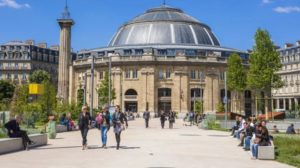
Over the last two years, despite the severe COVID restrictions, Paris somehow managed to work on a number of extraordinary cultural projects, most of which have now opened. These were not small-scale ventures by any means. As I’ve mentioned previously, two of these were the complete refurbishment of the enormous Musée Carnavalet, now re-opened, and the massive restoration of the Grand Palais, which is still ongoing. Last post, I looked at the new Christian Dior museum, La Galerie Dior. This time I’ll explore a huge project, the Bourse de Commerce, and next time another: La Samaritaine department store.
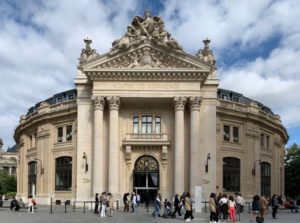
The beautiful 18th century Bourse de Commerce is located in the rue de Viarmes, which runs off rue de Louvre in the 1st arr. It’s a visually striking building, circular in shape and built of the cream-coloured limestone so typical of many Parisian buildings.
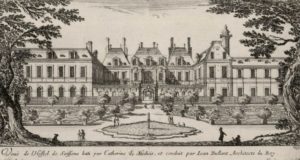
The current building replaced another from the 16th century, built on the same site called the Hôtel de la Reine, a palace for Catherine de Medici. This later became the Hôtel de Soissons from 1704 to 1748, when it was then demolished. The only thing left was a 31m high column that had stood in the one of the palace’s courtyards, overlooking the Parisian rooftops at the time. Its sculptured ornamentation consisted of fleur-de-lys, Catherine de Medici’s and her late husband Henri ll’s emblem, an intertwined H and C, as well as so-called “fragmented mirror” motifs, supposedly a symbol of lost love and mourning.

The design of the column was inspired by Trajan’s column in Rome, and was thought to have served as an observation point for the Queen’s astrologer, although no-one knows for certain.
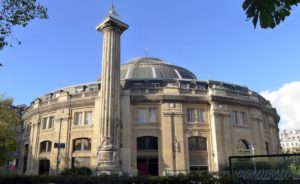
After the demolition of the palace, the writer Louis Petit de Bachaumont rallied the public to rescue the column before it was broken up. Bachaumont then bought it and donated it to the City of Paris. In 1764 a sundial was added, and then it became a public monument with the addition of a fountain in 1812 that no longer exists today. Now referred to as the Medici Column, it’s the only vestige of the former palace and its renaissance architecture, and was classified as a Historic Monument in 1862. A spiral staircase of 147 steps runs through the shaft of the column and there’s a vaulted passage with a few steps, invisible to the public, that connects it the second floor of the Bourse. During the restoration work, graffiti incised on the column’s internal walls dating from 1766, and others engraved during the Occupation of WW2 were discovered.
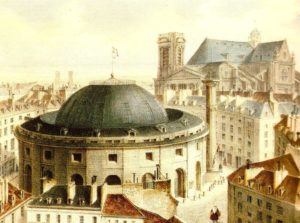
The vacant land where the palace once stood was selected for the construction of a new grain exchange designed by Nicolas de Camus de Mézières, with a circular central courtyard and a double staircase. The general layout of that building has been retained by all subsequent rebuilding. The surrounding streets converge to form a star, leading up to the circular building that was built for this purpose. At the time, its design was considered revolutionary, characterised by the vast central courtyard that was open to the sky. However, in 1783 in order to better protect the grain, the decision was taken to cover it with a vast, impressive dome made of timber—the largest dome in France at the time. This dome was destroyed by a fire and rebuilt in 1813 in iron covered in sheets of copper. The architect’s plan was innovative, and he created the first long-span cast iron frame ever erected.
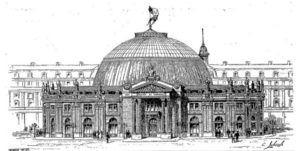
Badly damaged in 1854, the grain exchange fell into disuse and closed down in 1873. In 1885, the disused building was turned into the Stock Exchange—the Bourse de Commerce—by the architect Henri Blondel, for the Universal Exhibition of 1889. The building that Blondel designed still had the circular shape, but with 25 bays separated by two pilasters. The only features that Blondel retained were the internal circular wall, the courtyard area and the impressive metal dome that covered it. In effect, all that was left was a stone and metal skeleton. The original dome was replaced. The new dome was celebrated as a masterpiece of metallic framework, and was a precursor to Gustave Eiffel’s Tower.
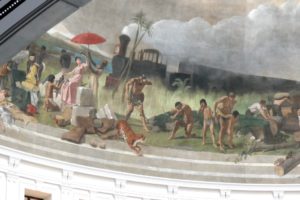
The new, completely transformed building was inaugurated on 24 September 1889. The new incarnation had a mezzanine, an additional floor and a vast painted series of scenes covering the lower part of the metal dome. These immense paintings cover 1,400 sq.m., creating a 360 deg. panorama, depicting the world of commerce that Europeans were creating across the continents from snowy Russia, to an emerging New World, and the markets of the East—the beginnings of capitalism and globalisation, and in a less positive light, a period of aggressive colonialism.
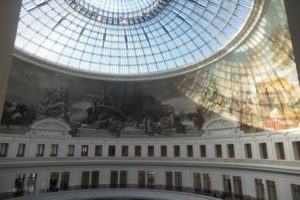
The Syndicat Général de la Bourse de Commerce de Paris operated the functions of the Commodities Exchange, controlling the syndicates for wheat, rye, oats, flour, oil, sugar, alcohol and rubber. After WW2, the futures markets were opened gradually to international trading in various commodities. With the computerisation of futures markets in 1998, these activities ended at the Bourse de Commerce building. All such functions and transactions now take place elsewhere, at Place de la Bourse.
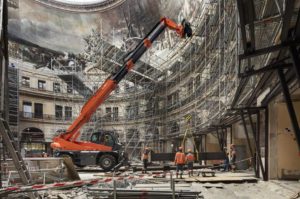
Before the restoration there had been numerous alterations: the whole interior décor was very dirty and covered in an almost white haze, and in parts mould had changed the colours, numerous parts showed wear, blemishes and lifting of the paint, and tiny gaps were appearing in the surface.
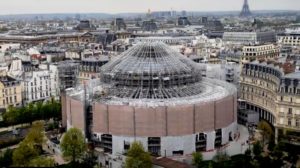
The restoration and alterations took over 3 years to transform one of the city’s most symbolic buildings into a museum entirely dedicated to exhibiting contemporary art. The initial examination of the structure was carried out with the help of drones that could immediately provide very detailed information about the condition of the structure, which were confirmed by laser survey.
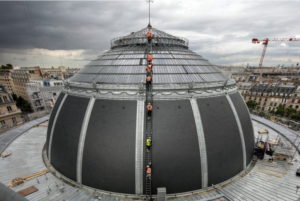
The glass dome was a particular challenge, both in terms of preserving the past and allowing the building to adapt to its new life as a museum. As the architects acknowledged, the glass dome is one of the highlights of the building, saying that it “inundates the Rotunda with its light, like an eye looking up at the Parisian sky”. The original 19th century glass had been replaced in the 1990s, and during this latest restoration, that was replaced with new double-glazing which has a far higher thermal efficiency. The new glass has also been treated to control solar radiation without affecting the quality of the light and its intensity in the heart of the building.
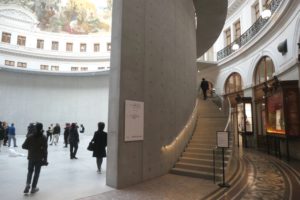
The whole project was carried out by the Japanese architect Tadao Ando in association with French architectural company Ronan and Erwan Bouroullec, and said to have cost over €185 million. Within the rotunda a concrete cylinder, 30m in diameter and a height of 9m was built. The cylinder hosts the main exhibition space inside its walls and an auditorium below. The exterior of the cylinder forms a corridor, like an internal street, between the concrete wall and the interior of the façade. A number of rooms open off the internal street, which exhibit art works, including sculpture and paintings by different artists.

A circular walkway provides access to the upper floor. As you ascend the staircase, the sheer size of the frescos of the cupola are hypnotic. Their restoration took 3 years to complete. “The spatial layout of the Bourse de Commerce is designed to create an intense and more subtle dialogue between new and old.” Tadao Ando
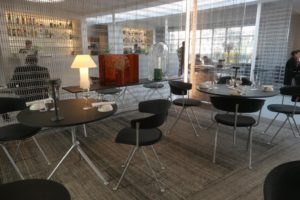
On the top floor is the museum’s restaurant, La Halle aux Grains, whose name was inspired by the building’s original function. It’s operated by father and son restaurateurs, Michel and Sébastien Bras, offering a cuisine in which grains, seeds and seedlings play a major role.
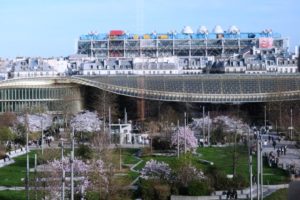
The restaurant offers spectacular vistas of the Église Saint-Eustache, the new canopy of Les Halles, the Centre Pompidou and the rooftops of Paris, as well as up-close-and-personal views of the panoramic frescos covering the dome. Make sure to visit the restaurant, even if only for a restorative coffee.
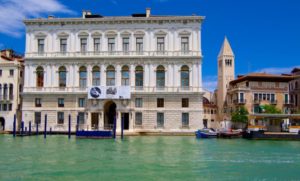
The museum’s namesake, François Pinault, is now 84 years of age. He grew up in Brittany, and set foot in Paris for the first time en route to complete his military service during France’s colonial war in Algeria. Today, among his company, Kering’s many assets are the auction house Christies and high fashion labels Yves St. Laurent, Balenciaga, Bottega Veneta, Alexander McQueen, Gucci and Boucheron. However, his great passion is for collecting contemporary art. In 2005 he purchased the 18th century Palazzo Grassi on Venice’s Grand Canal from the Fiat Group who had bought it in 1983 for use as an art gallery and exhibition venue.
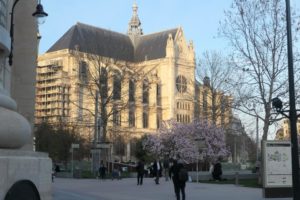
That project was carried out by Gae Aulenti, the architect responsible for the Musée d’Orsay’s conversion from a railway station. Pinault commissioned Tadao Ando to carry out the remodelling of the Palazzo as a venue to display some of his growing collection. As Pinault was very happy with this conversion, and having developed a great rapport with the Japanese architect, he was an obvious choice for the Paris project. The artworks on display at the Bourse de Commerce are also from Pinault’s private collection, and said to be valued at around €1.25 billion.
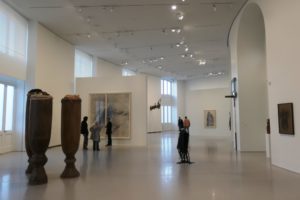
“The opening of the Bourse de Commerce-Pinault Collection, a new site in the heart of Paris to display my collection, marks a new phase in the execution of my cultural project, which is to share my passion for contemporary art with the widest possible audience.” François Pinault.
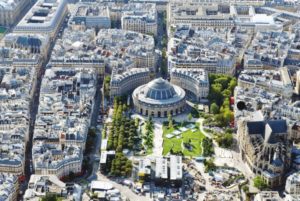


What an absolutely gorgeous building – such
an interesting read – thank you.
Hi Nadine,
So glad you enjoyed reading it. Yes, it is a beautiful building. We’d walk past it quite often and wonder what its new incarnation was going to be, so we’re thrilled that it is actually publicly accessible, rather than being turned into say, a corporate headquarters or some such use. Not absolutely wild about the artworks, but in our view, the building itself is the main attraction!
Cheers,
Cheryl